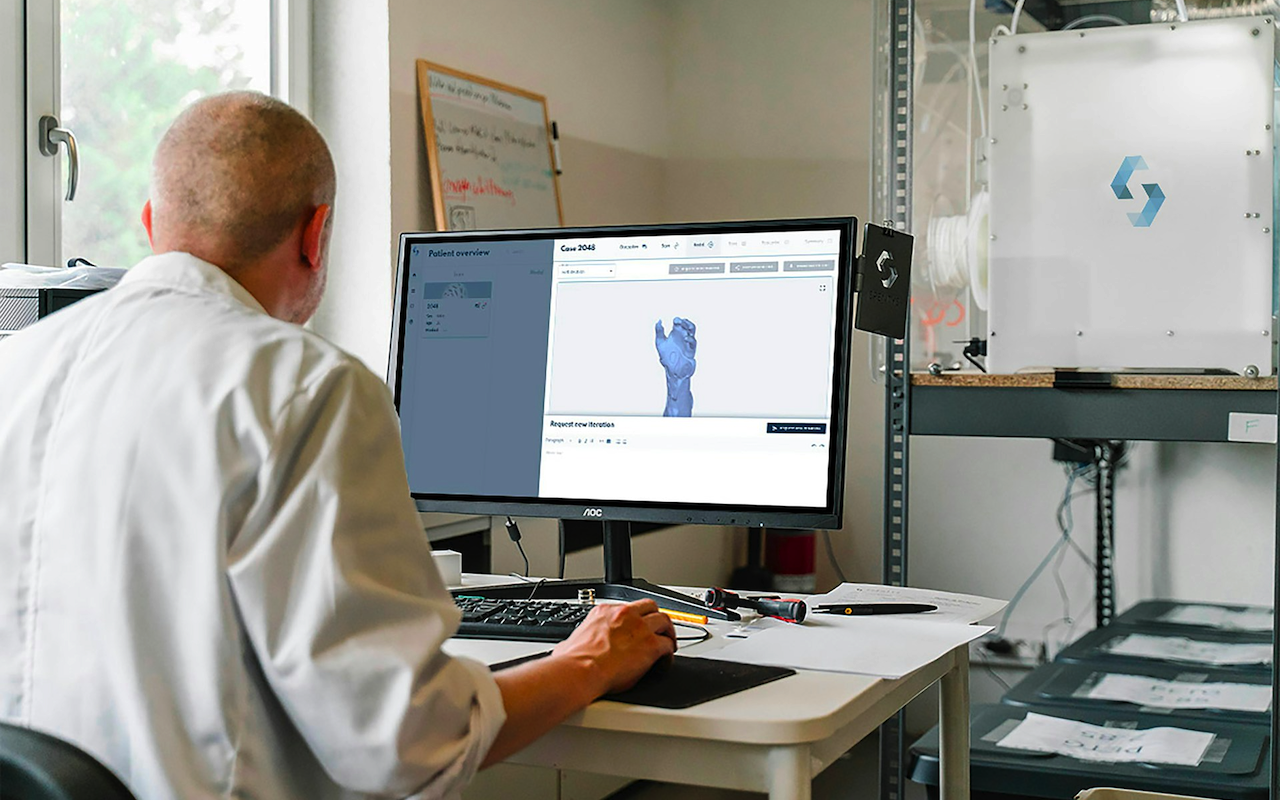
In today’s fast-moving digital economy, businesses can no longer rely on broad-stroke marketing strategies or generic product offerings. Consumers are smarter, more connected, and increasingly expect experiences tailored to their unique needs and preferences. The era of “one-size-fits-all” is fading, and in its place is a revolutionary approach: hyper-personalization. From online retail to physical products, hyper-personalization is transforming the way companies interact with customers, redefine value, and build loyalty.
This isn’t just a trend—it’s a seismic shift in business strategy that is reshaping industries across the globe. Businesses that fail to embrace this change risk becoming obsolete, while those that get it right are seeing extraordinary results in engagement, retention, and revenue.
Understanding Hyper-Personalization: More Than Just a Buzzword
Hyper-personalization is the next evolution of personalization. While traditional personalization might involve using a customer’s first name in an email or suggesting a product based on past purchases, hyper-personalization dives far deeper. It leverages advanced technologies like artificial intelligence, machine learning, real-time analytics, and predictive modeling to deliver experiences, products, and services tailored to each individual’s behavior, preferences, and context.
Imagine walking into a store and having every shelf, every offer, and even the store layout adjusted to reflect your tastes, past shopping habits, and even your current mood. That’s hyper-personalization in action—taking personalization from a simple, generic touchpoint to a fully immersive, data-driven customer journey.
Why Hyper-Personalization Matters Today
The shift toward hyper-personalization isn’t just about luxury experiences or tech-savvy millennials. It’s about fundamental changes in consumer expectations:
1. Instant Gratification and Convenience
Customers today expect immediate relevance. They don’t want to sift through endless options to find something they like. Hyper-personalization ensures the right products and services reach the right person at the right time.
2. Consumer-Centric Experiences
Businesses that can anticipate needs and deliver tailored experiences create stronger emotional connections. A customer who feels understood is far more likely to become loyal.
3. Data-Driven Insights
Hyper-personalization thrives on data. Every interaction, purchase, and click provides valuable insight, allowing businesses to continually refine offerings and marketing strategies.
4. Competitive Advantage
Companies that successfully implement hyper-personalization differentiate themselves from competitors. In a crowded marketplace, being “just-for-you” is far more compelling than being “for everyone.”
Hyper-Personalization in Action: Examples That Inspire
Across industries, hyper-personalization is already reshaping customer experiences:
1. Retail
Leading retailers use AI-powered recommendation engines that analyze purchase history, browsing behavior, and even social media activity to suggest products customers didn’t even know they wanted.
2. Healthcare
Personalized medicine is becoming a reality, with treatments and wellness plans tailored to an individual’s genetic profile, lifestyle, and health history.
3. Finance
Financial institutions are leveraging hyper-personalization to offer tailored investment recommendations, alerts, and budgeting advice, improving customer satisfaction and trust.
4. Hospitality
Hotels now use guest data to provide room preferences, customized amenities, and personalized travel recommendations, turning every stay into a unique experience.
Even in the world of vending solutions, hyper-personalization is making waves. Businesses that offer custom vending machines can now tailor not only the selection of products but also the interface, branding, and customer experience based on location demographics, peak usage times, and even real-time inventory data. For example, a gym vending machine might automatically stock high-protein snacks and hydration options in the mornings, while switching to energy drinks and recovery supplements in the evening.

How Technology Enables Hyper-Personalization
The rise of hyper-personalization is inseparable from advances in technology. Several key innovations make this level of customization possible:
1. Artificial Intelligence (AI) and Machine Learning
AI algorithms analyze massive datasets to identify patterns, predict behaviors, and suggest products or services tailored to individual preferences.
2. Real-Time Analytics
Modern analytics platforms allow businesses to respond to customer behavior instantly. Whether it’s a website pop-up or a push notification from a mobile app, real-time personalization keeps customers engaged.
3. Internet of Things (IoT)
Connected devices—from smart refrigerators to fitness trackers—collect data that can inform highly personalized experiences. In the case of custom vending machines, IoT sensors track stock levels, consumption trends, and even individual preferences to optimize offerings continuously.
4. Customer Data Platforms (CDPs)
CDPs unify customer information from multiple channels, giving businesses a complete view of every interaction. This centralized data is crucial for delivering meaningful, personalized experiences.
The Benefits of Hyper-Personalization for Businesses
Businesses that embrace hyper-personalization enjoy a range of tangible benefits:
1. Increased Revenue and Conversion Rates
Tailored recommendations, dynamic pricing, and customized offers all contribute to higher conversion rates. When a customer feels like a product was made for them, they are far more likely to buy it. Retailers that adopt AI-driven personalization see measurable increases in sales, often exceeding 20–30%.
2. Enhanced Customer Loyalty and Retention
A personalized experience fosters emotional connection. Customers who feel understood are more likely to return, advocate for the brand, and engage in repeat purchases. Loyalty programs that leverage personalization—like offering products or rewards based on past behavior—can significantly improve retention rates.
3. Improved Operational Efficiency
Hyper-personalization isn’t just about customer-facing experiences. It also allows businesses to optimize inventory, staffing, and product offerings. For instance, custom vending machines can be programmed to stock the most popular items automatically, reducing waste and maximizing profit per machine.
4. Differentiation in Competitive Markets
In industries where products are commoditized, personalization becomes a key differentiator. Companies that offer tailored solutions—whether it’s a personalized subscription box, an AI-driven skincare regimen, or a custom vending machine stocked with customer-preferred items—stand out from the competition.
Overcoming the Challenges of Hyper-Personalization
Despite its benefits, implementing hyper-personalization is not without challenges:
1. Data Privacy Concerns
Customers are more aware of how their data is used. Businesses must prioritize transparency, consent, and robust data protection practices to maintain trust.
2. Complex Technology Integration
Implementing AI, IoT, and CDPs requires significant investment and technical expertise. Businesses must ensure systems are interoperable and scalable.
3. Avoiding Over-Personalization
Too much personalization can feel invasive. Striking the right balance is key to creating meaningful, welcome experiences rather than creeping out customers.
4. Continuous Optimization
Hyper-personalization is not a one-time effort. Businesses must constantly analyze data, iterate strategies, and update offerings to maintain relevance.
Hyper-Personalization and the Future of Business
Looking ahead, hyper-personalization is poised to become the baseline expectation, not the exception. Consumers will increasingly demand experiences that feel tailored and unique, and businesses that fail to deliver risk losing relevance. Here’s what the future may look like:
1. AI-Powered Experiences Everywhere
Expect AI to curate almost every interaction, from shopping to entertainment to healthcare, making human intuition augmented by predictive technology.
2. Seamless Omnichannel Personalization
Customers will expect a unified, personalized experience across all touchpoints, whether online, in-store, or on mobile devices.
3. Sustainable and Ethical Personalization
With growing attention to sustainability and ethical business practices, companies will use personalization not just for profit, but to reduce waste, optimize supply chains, and promote socially responsible choices.
4. Customization in Physical Spaces
Hyper-personalization won’t be limited to the digital world. Physical products and spaces, including custom vending machines, furniture, or even office layouts, will increasingly adapt to individual preferences in real-time.
How Businesses Can Get Started with Hyper-Personalization
For businesses eager to embrace hyper-personalization, the following steps can help ensure success:
1. Start with Data Collection
Gather first-party data from all touchpoints—websites, apps, in-store interactions, social media, and IoT devices. Quality data is the foundation of effective personalization.
2. Segment and Analyze Customers
Move beyond basic demographics to behavioral and contextual data. Understand what motivates each customer, their habits, and their unique needs.
3. Implement AI and Automation Tools
Use AI and machine learning to process data, predict behavior, and automate personalized interactions. Even small-scale implementations can yield significant improvements in engagement.
4. Test and Iterate
Hyper-personalization is a continuous process. Run experiments, measure performance, and adjust strategies based on real-world results.
5. Protect Customer Trust
Be transparent about data usage, provide easy opt-out options, and comply with privacy regulations. Trust is the backbone of personalized experiences.
Conclusion
The business landscape is evolving at an unprecedented pace, and the shift from one-size-fits-all solutions to hyper-personalized experiences is rewriting the rules. From online platforms to physical products like custom vending machines, personalization is no longer optional—it’s essential.
By leveraging advanced technologies, analyzing rich data, and putting the customer at the center of every decision, businesses can create truly bespoke experiences that drive engagement, loyalty, and revenue. Hyper-personalization is more than a trend—it’s a paradigm shift that rewards companies willing to innovate, adapt, and embrace the power of “just-for-you.”
The future of business belongs to those who see every customer as an individual, not a statistic. And in this future, hyper-personalization isn’t just a strategy—it’s the new standard of excellence.
Images by Unsplash.
Share this post
Leave a comment
All comments are moderated. Spammy and bot submitted comments are deleted. Please submit the comments that are helpful to others, and we'll approve your comments. A comment that includes outbound link will only be approved if the content is relevant to the topic, and has some value to our readers.

Comments (0)
No comment